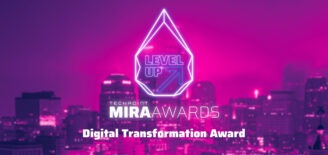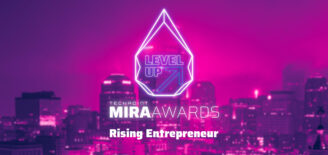Engaging Underserved Students in STEM: You’re the Solution
Twenty years ago, my career journey started off in a global company that sold customer relations technology to other companies. I was working in an office full of young professionals like myself, yet somehow, I was all alone. Looking back, I realize the reason was that I was the only Black female on a team that mostly consisted of White and Asian males. I dealt with a variety of negative emotions including an intense feeling of imposter syndrome and insecurities as a result of not advancing to greater levels to the extent that I should’ve been.

In schools, especially in lower income areas, access to activities that engage student interest is often limited to physical sports or other games. Systematic racism has contributed to the underfunding of public schools in these areas. COVID-19 has set students behind in their classes, creating a learning gap, and contributing to any existing discouragement they have toward learning. Another contributor to lack of STEM engagement and exposure for these students is that neither they nor their parents are aware of the opportunities available to explore these career pathways.
In order to start the pipeline we must change the way we engage students in STEM. For example, many students are introduced to STEM first by learning the concepts of mathematics or science. We should instead take the time to introduce students to one of the broader meanings of STEM, such as the ability to solve problems, and then introduce them to science and mathematics concepts as tools for solving these problems.
Obviously, changing the education system’s methods for teaching students is not an immediate solution to such an urgent problem. However, with the help of employers and student-serving organizations, we can change the activities students already do. For example, recess is a time most younger students enjoy and look forward to. If we make problem solving activities available to students in the typical fun outdoor setting, the opportunity to engage with and learn about STEM would increase naturally.
Activities such as balloon tower building promotes the skill of engineering design. Intellectually challenging games such as chess can be another option aside from cards. Even a simple paper airplane building contest as an opportunity in place of a basketball contest can encourage an understanding of aerodynamics and flight. These are only small examples of what we as professionals, employers, and nonprofits can do to make this necessary change.
Here’s how employers can help:
- Volunteer in schools and youth-serving organizations. The only connections students have to STEM is through their parents and teachers. They need interactions with industry professionals to get an inside view of the roles available. Don’t hesitate to reach out to organizations such as DirectEmployers Institute to ask how you can help them support student learning.
- Sponsor a school in a low-income area. If STEM companies can sponsor a school, the school will become more equipped to further meet students’ STEM learning needs.
- Create your own programs and events for students. Companies spend a lot of time and resources toward events for their partners, sponsors, and employees. Why not place some of these resources toward students who may be a part of your employee pipeline?
Where educators and organizations are already going above and beyond, we as STEM professionals can help fill the gaps. School systems in lower income areas are already stretched thin, but organizations such as DirectEmployers Institute can assist in efforts like these to provide students with a glimpse into what STEM looks like when applied to the real world. We can help these students see that they have an abundance of options for their futures and that not only does STEM belong in their activities, but also that many of these students belong in the world of STEM.






































